February 18th, 2023
Miyajima Island
Unfortunately, we were not lucky with the weather this day. In the morning the sky closed in. It should also remain rainy throughout the whole day. We first had a rich breakfast at the hotel restaurant overlooking Hiroshima and then took a boat from the Peace Memorial Park to the offshore island of Miyajima. There we wanted to visit the Itsukushima Shrine, undoubtedly the island’s most famous landmark. It is famous for its “floating torii gate”, which seems to float in the water at high tide.
Itsukushima Shrine
The basic form of the shrine originated as long ago in the year 593, and the structure still remaining today was built in the 12th century for Taira no Kiyomori. Its main buildings rest directly in front of the island on raised platforms, whose pillars are submerged in water at high tide, so that the whole complex seems to float. The individual buildings are connected by a 280 meter long covered corridor.
World famous is the wooden torii from 1875, which is located about 160 meters in front of the shrine. At low tide it can be reached by foot, at high tide it stands completely in the water. It is one of the most photographed landmarks in Japan. However, it made a good motif even in bad weather.
Here are some pictures of the famous Torii and the temple complex:
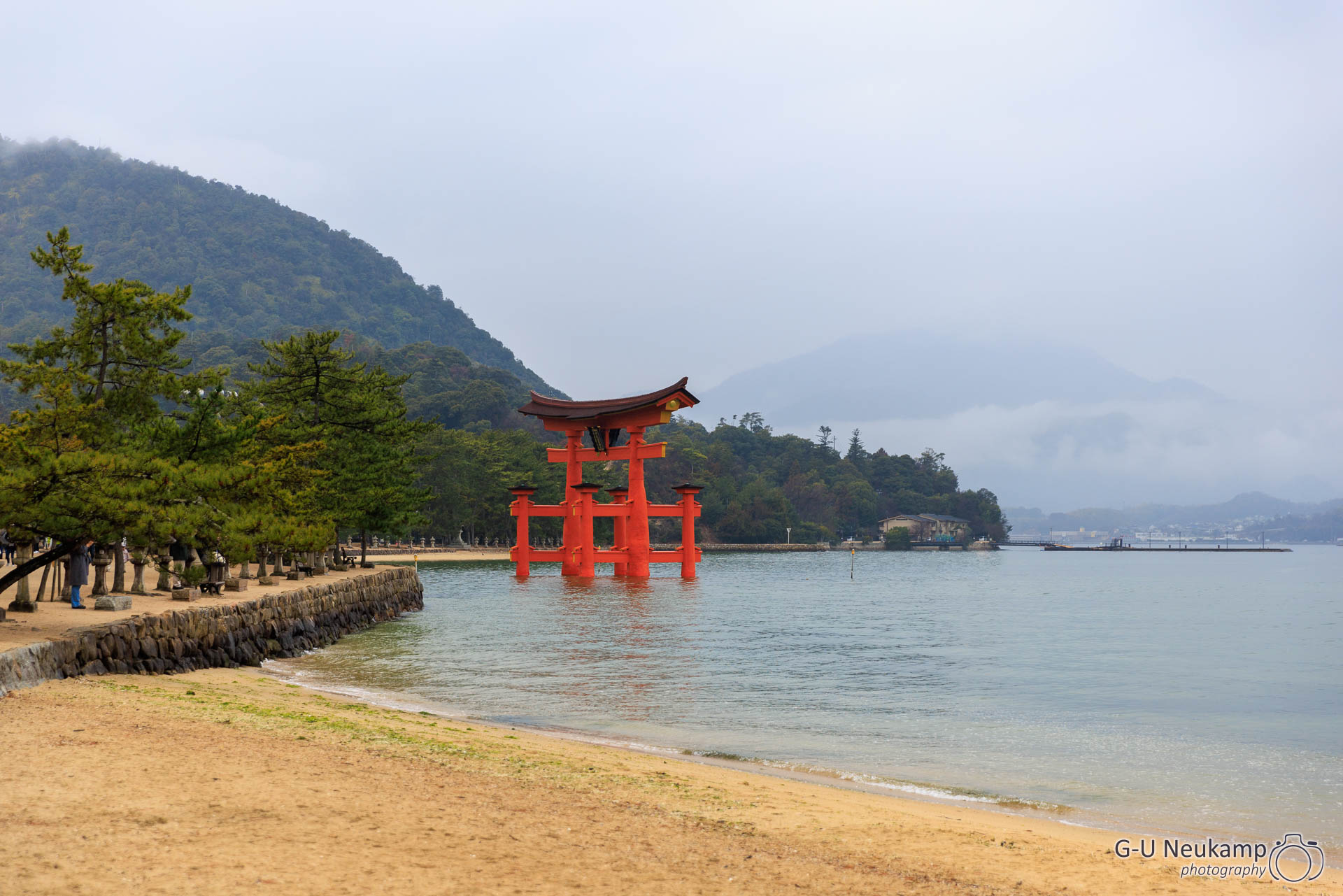
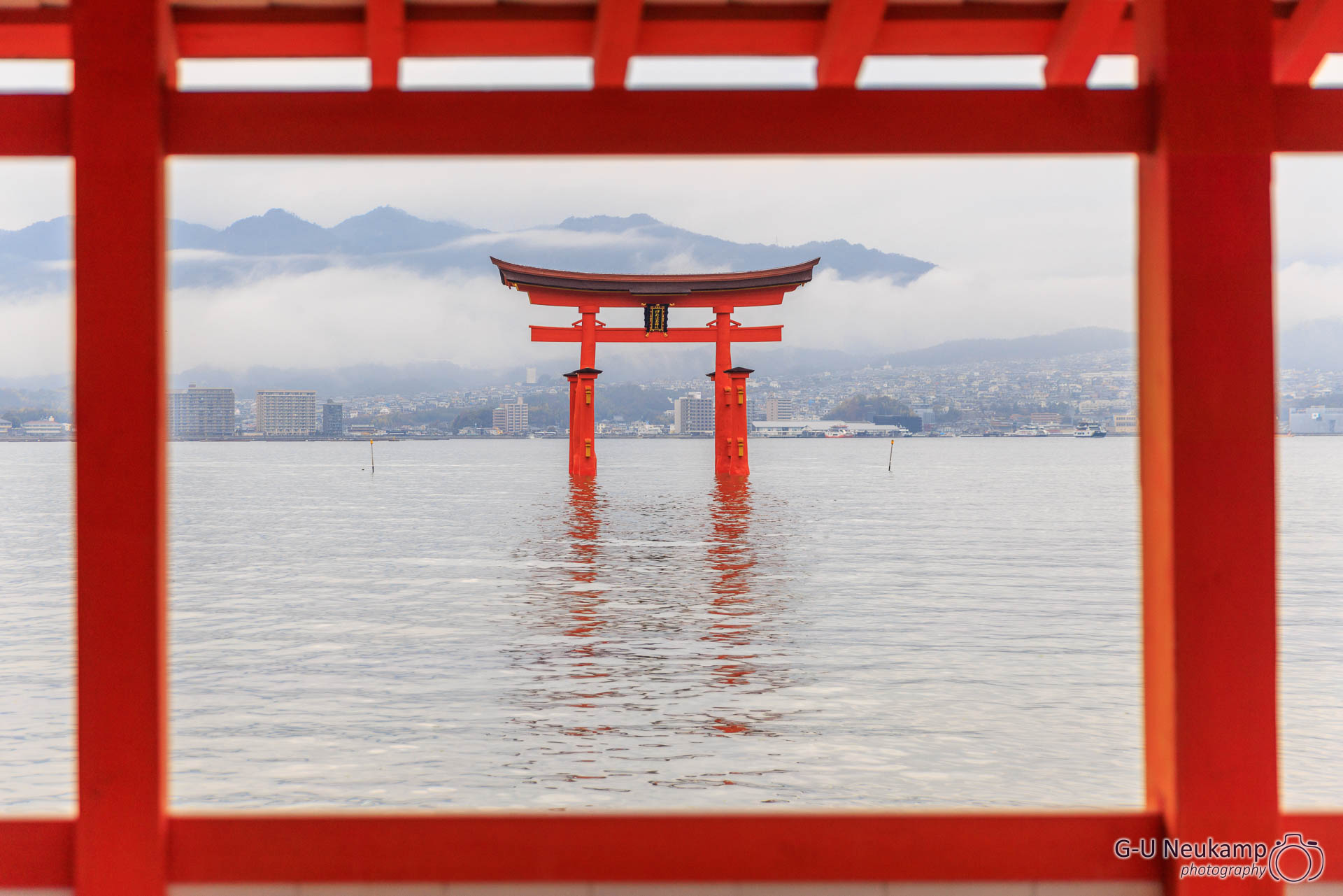
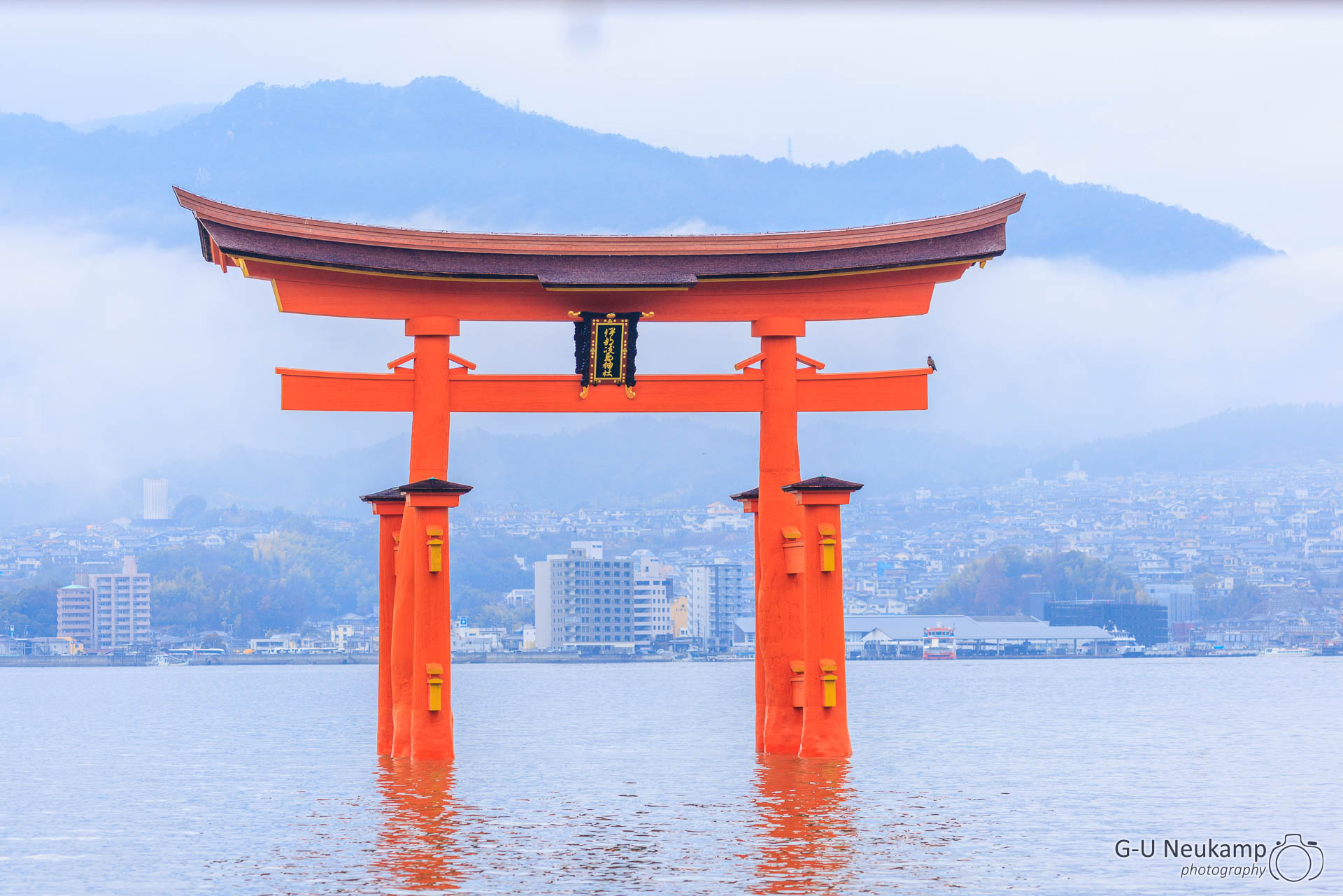
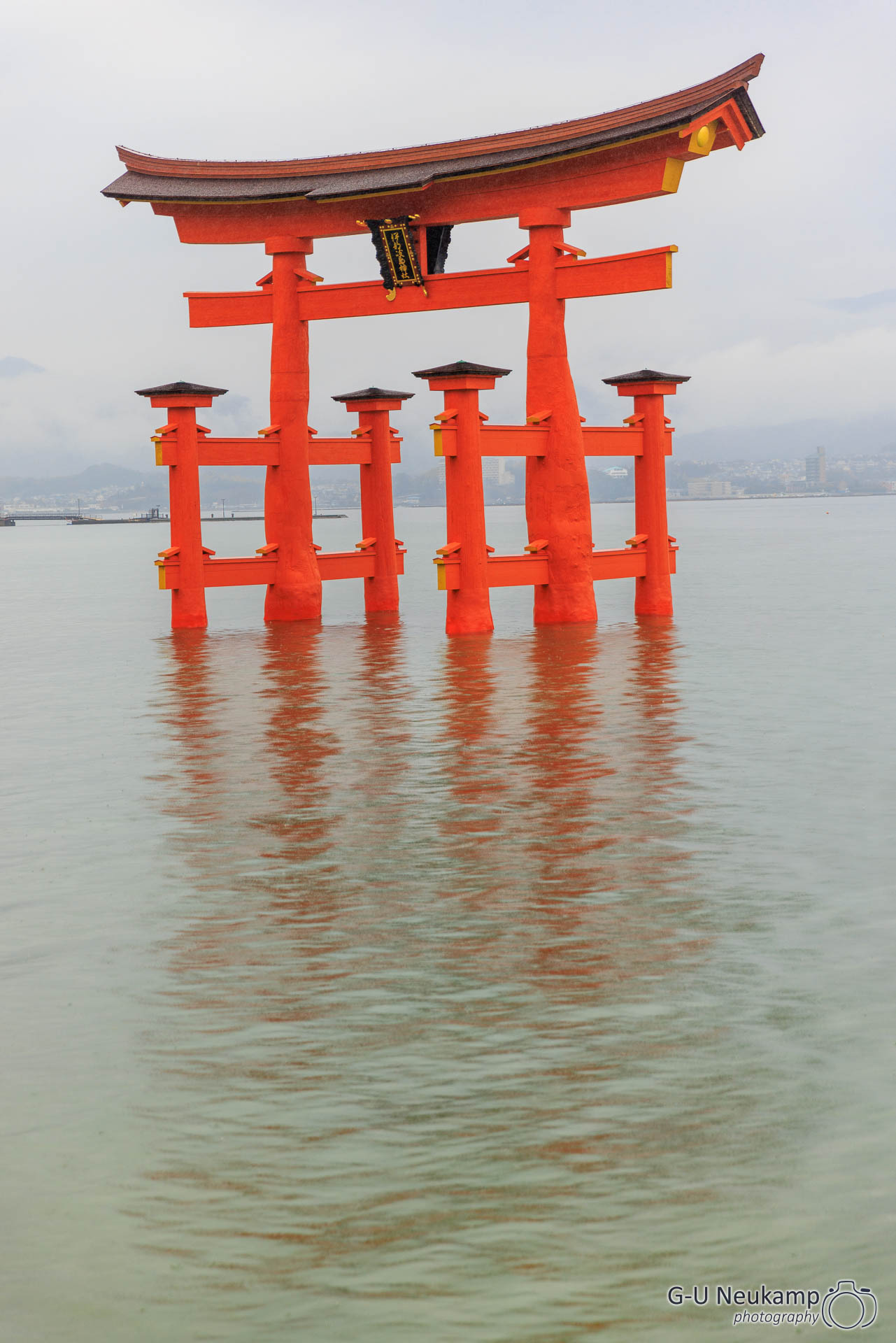
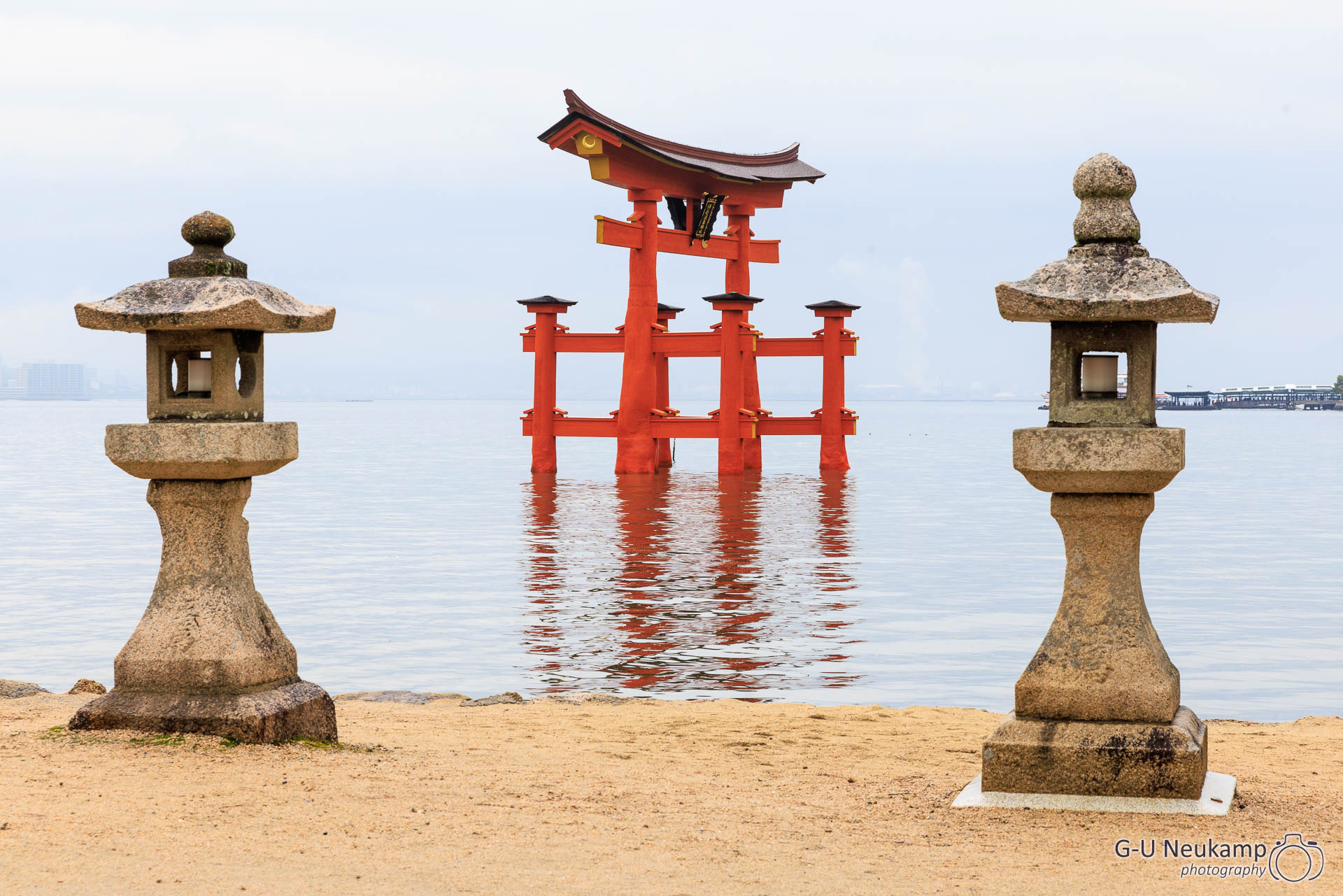
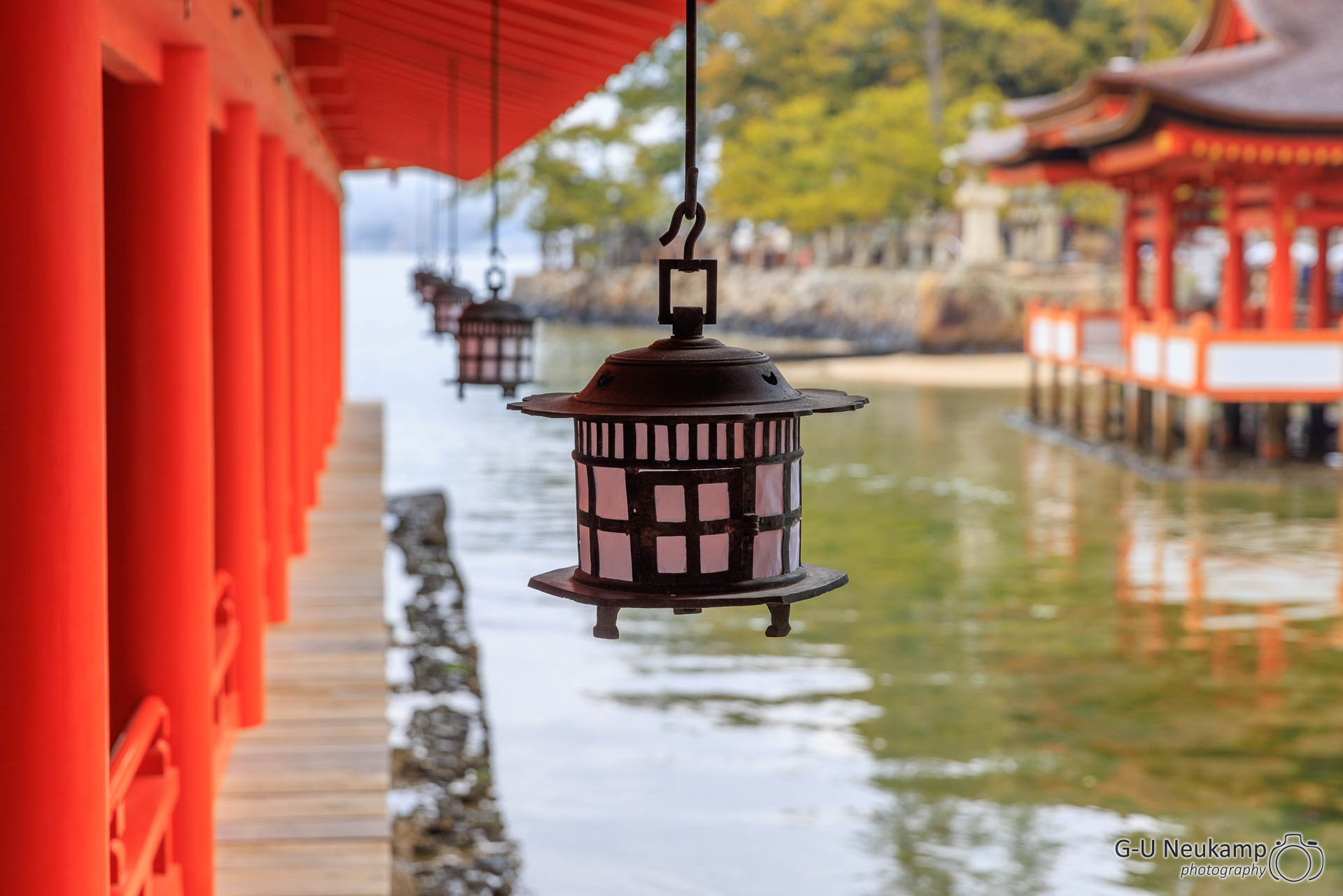
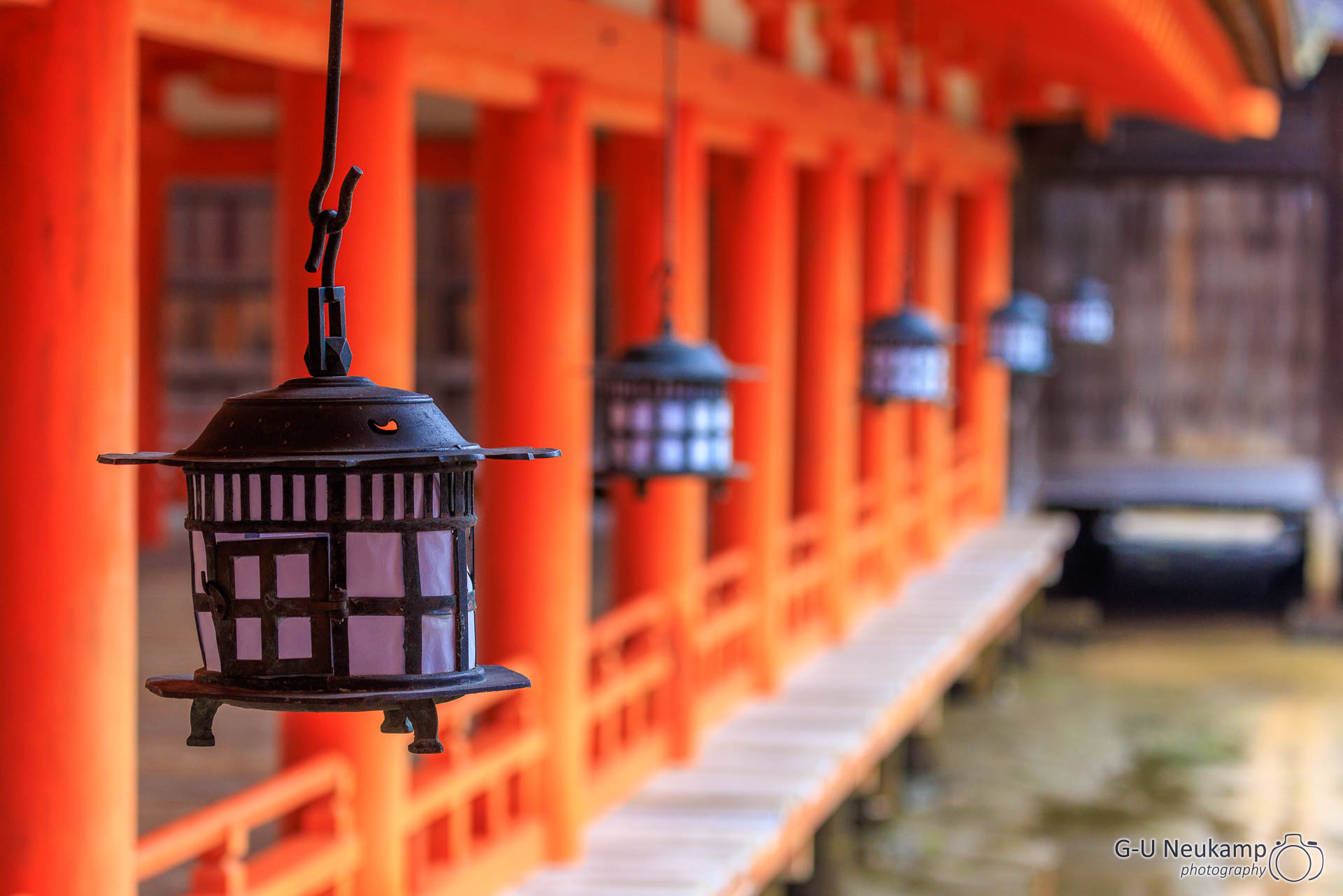
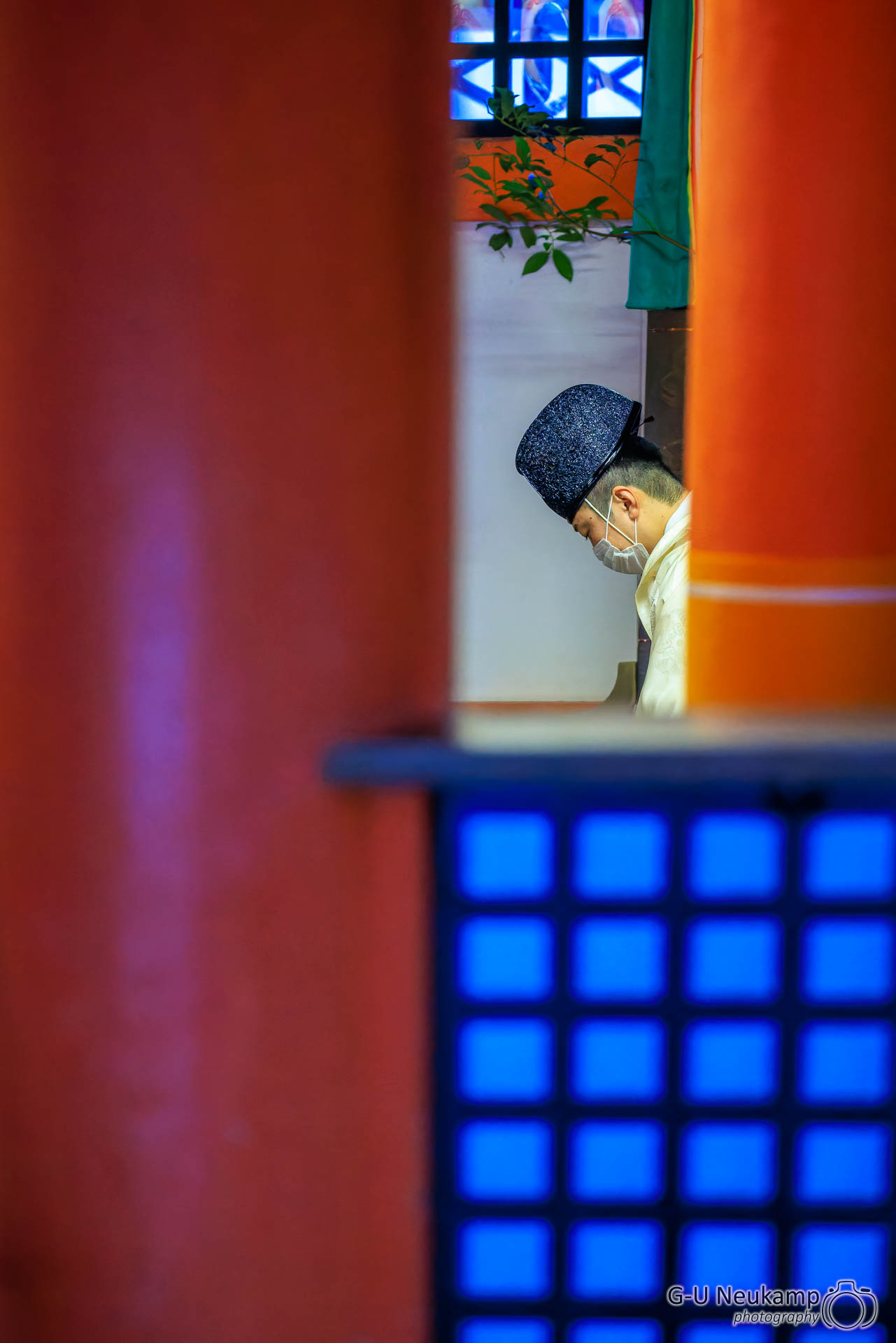
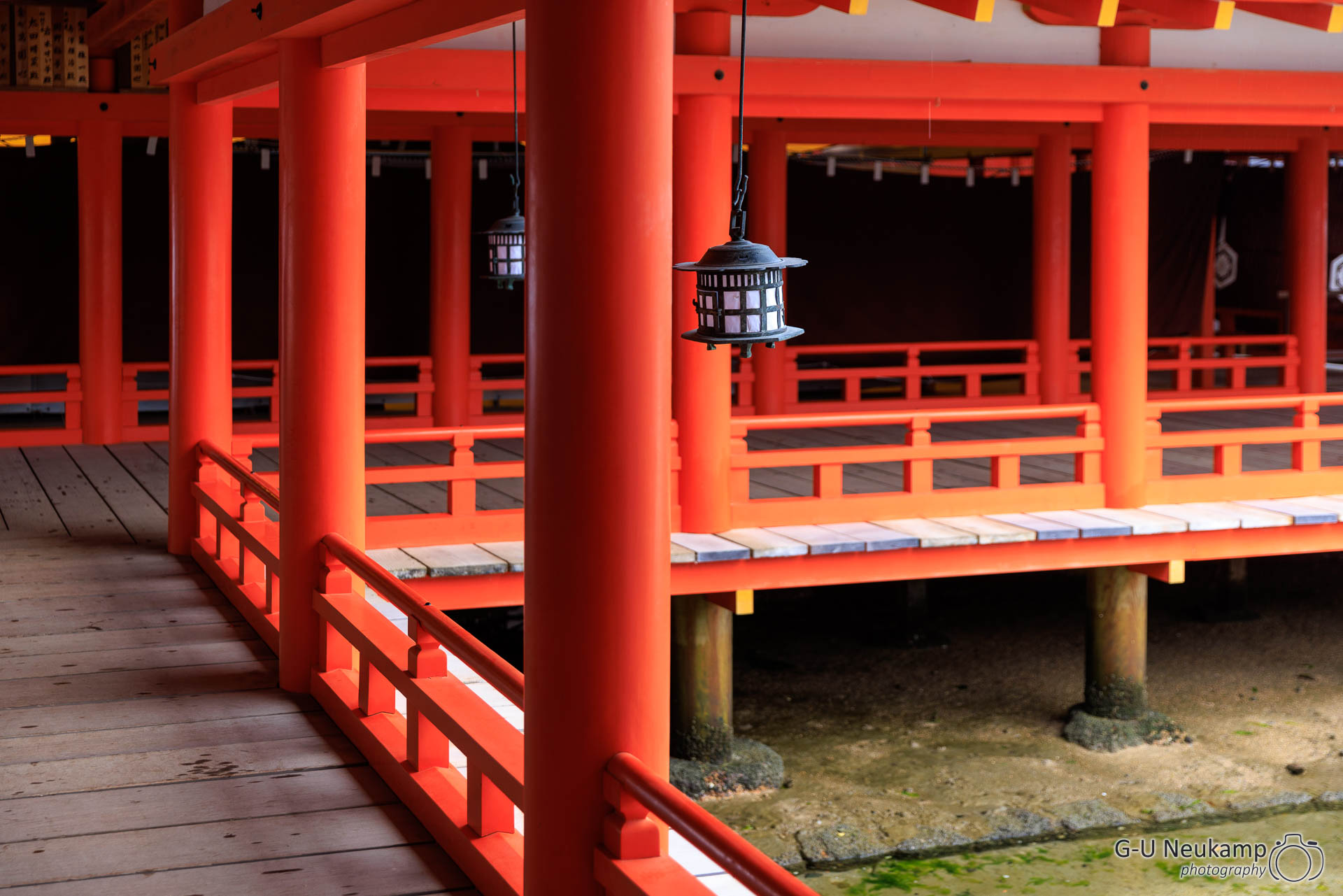
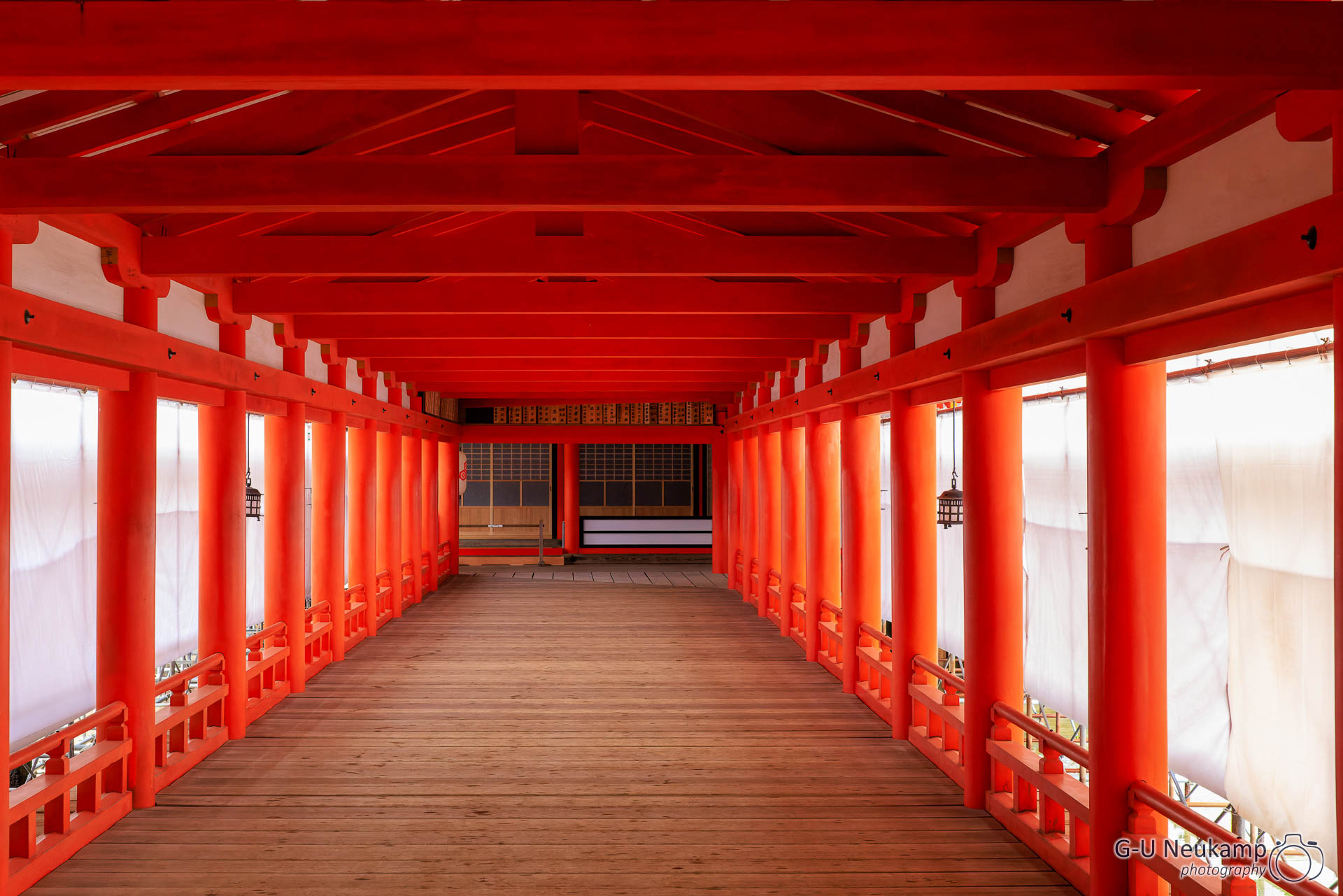
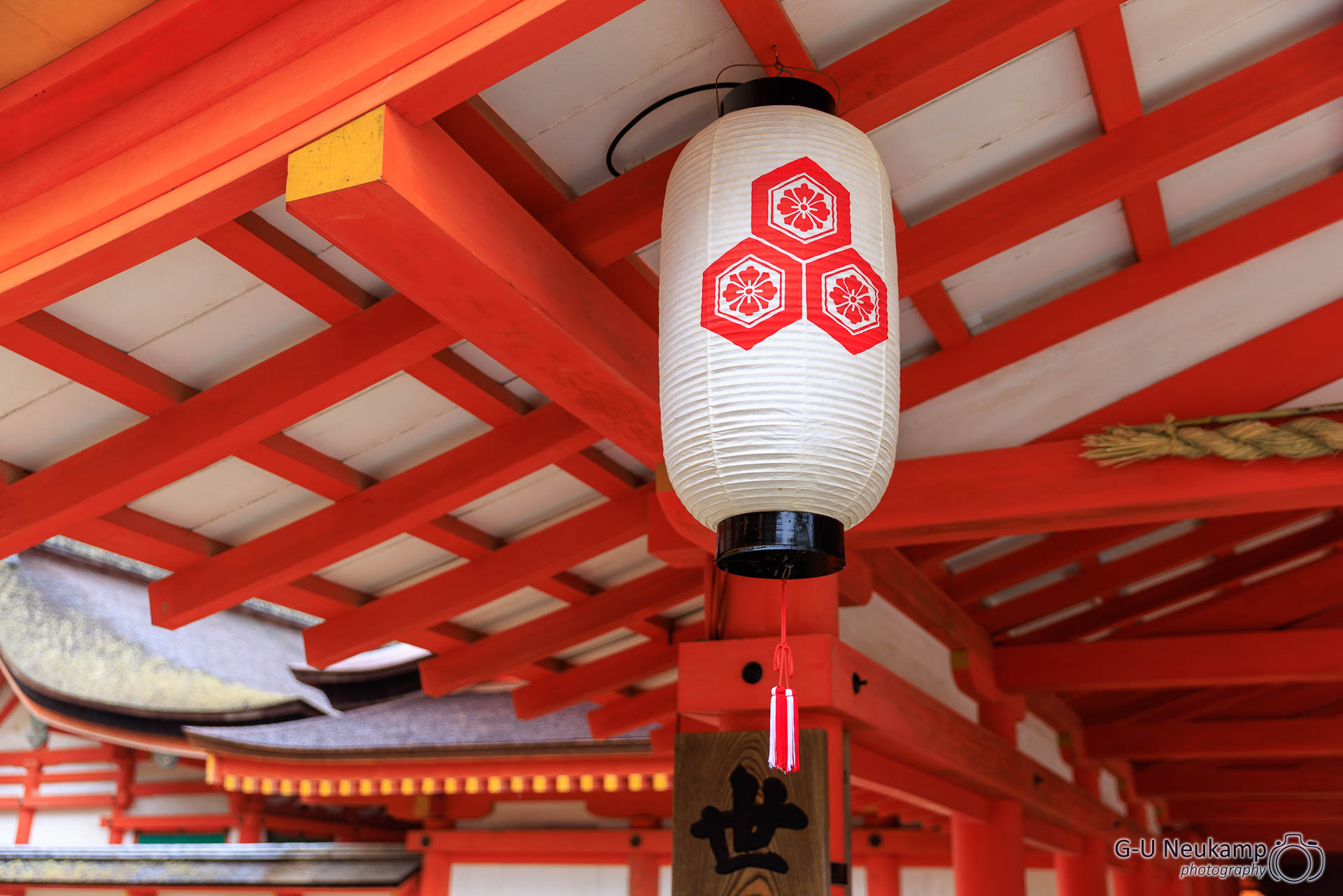
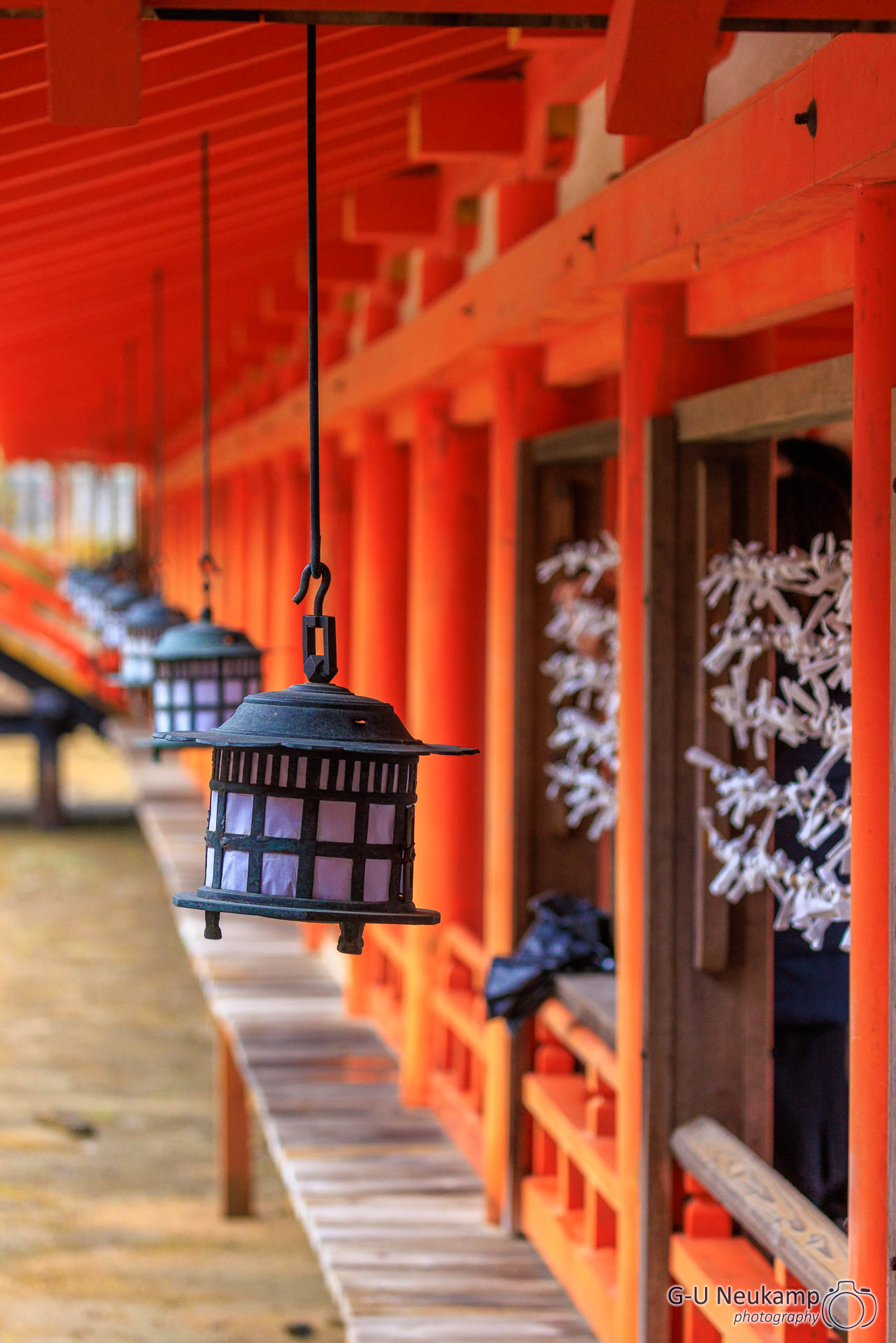
The island is home to many wild deer known as “Miyajima deer” or “Sacred deer”. The Miyajima deer are small to medium sized and have a characteristic appearance with a brown fur and white spots. Since there are no predators on the island, the deer are very friendly and popular photo subjects:
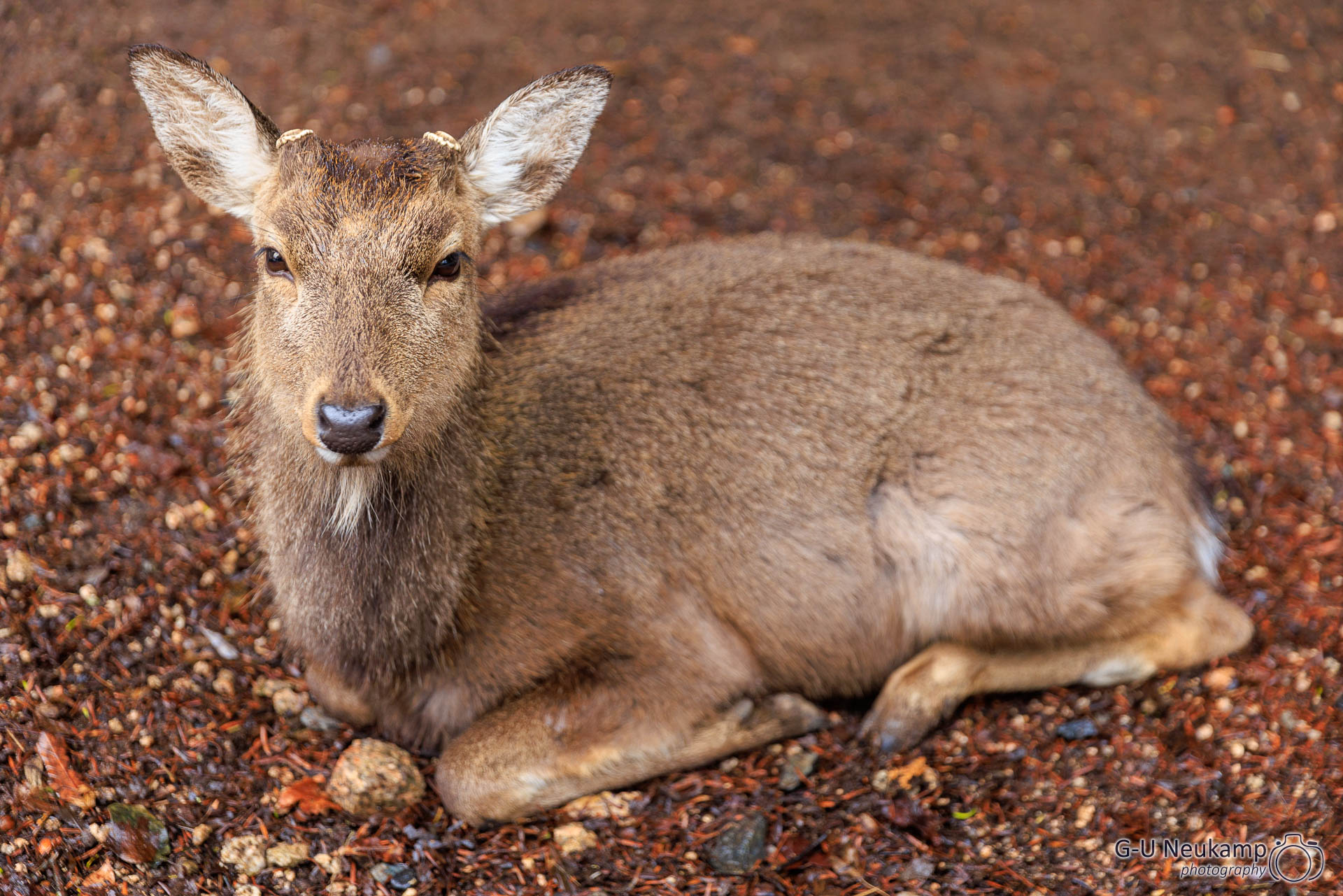
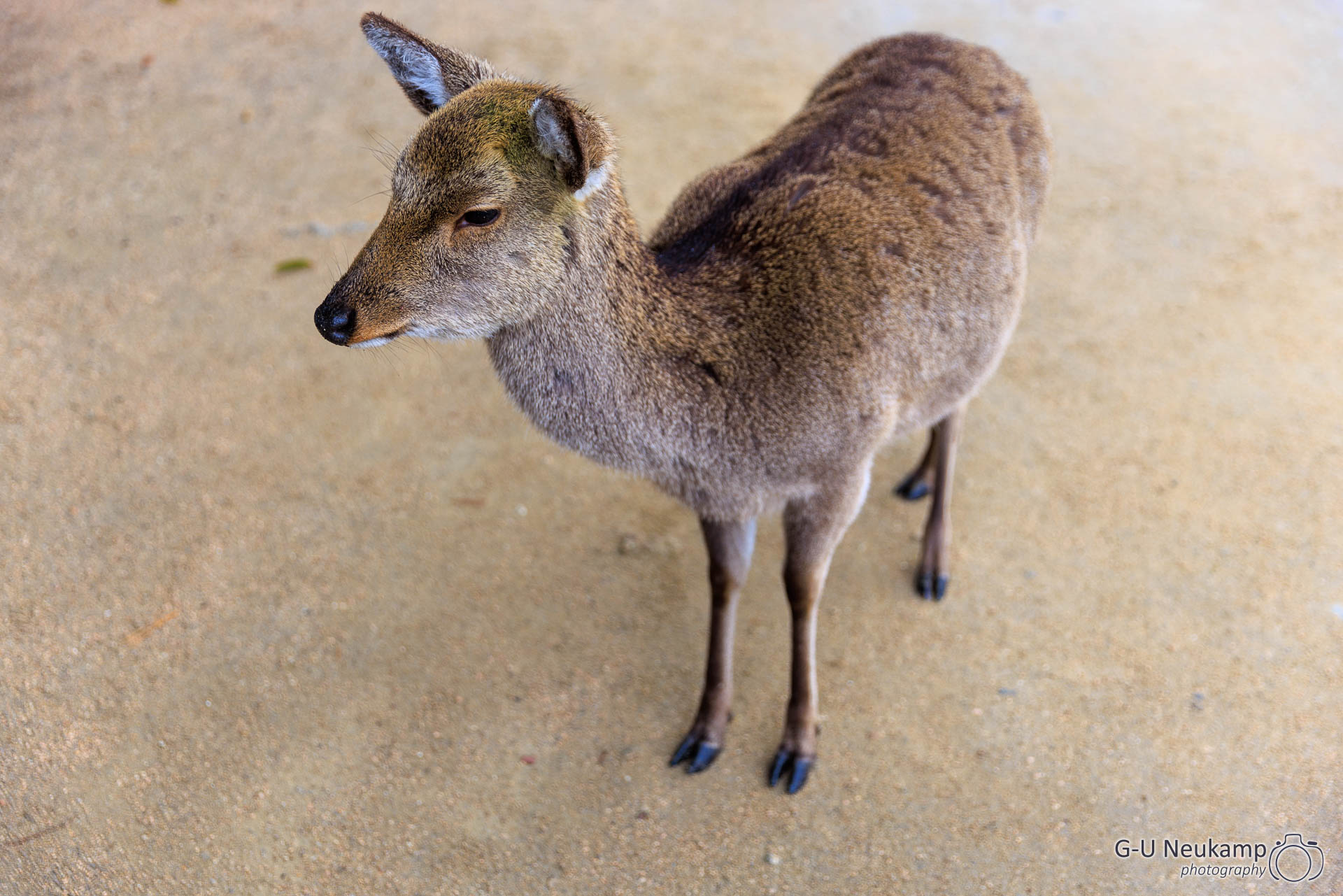
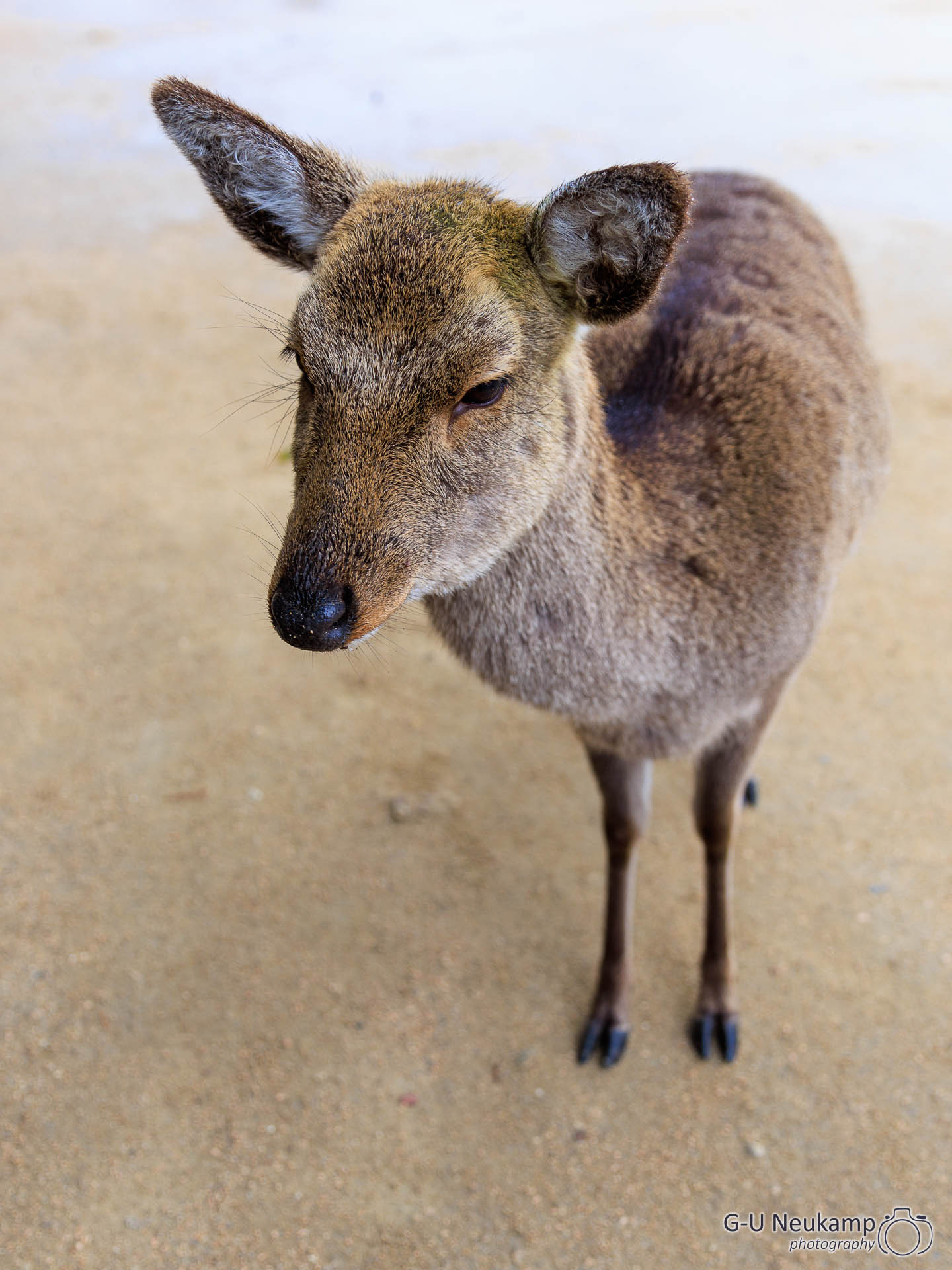

Since it continued to rain after the visit to Itsukushima Shrine, we briefly rescheduled and visited the very interesting aquarium on Miyajima. In an open basin Luise even petted a large starfish.
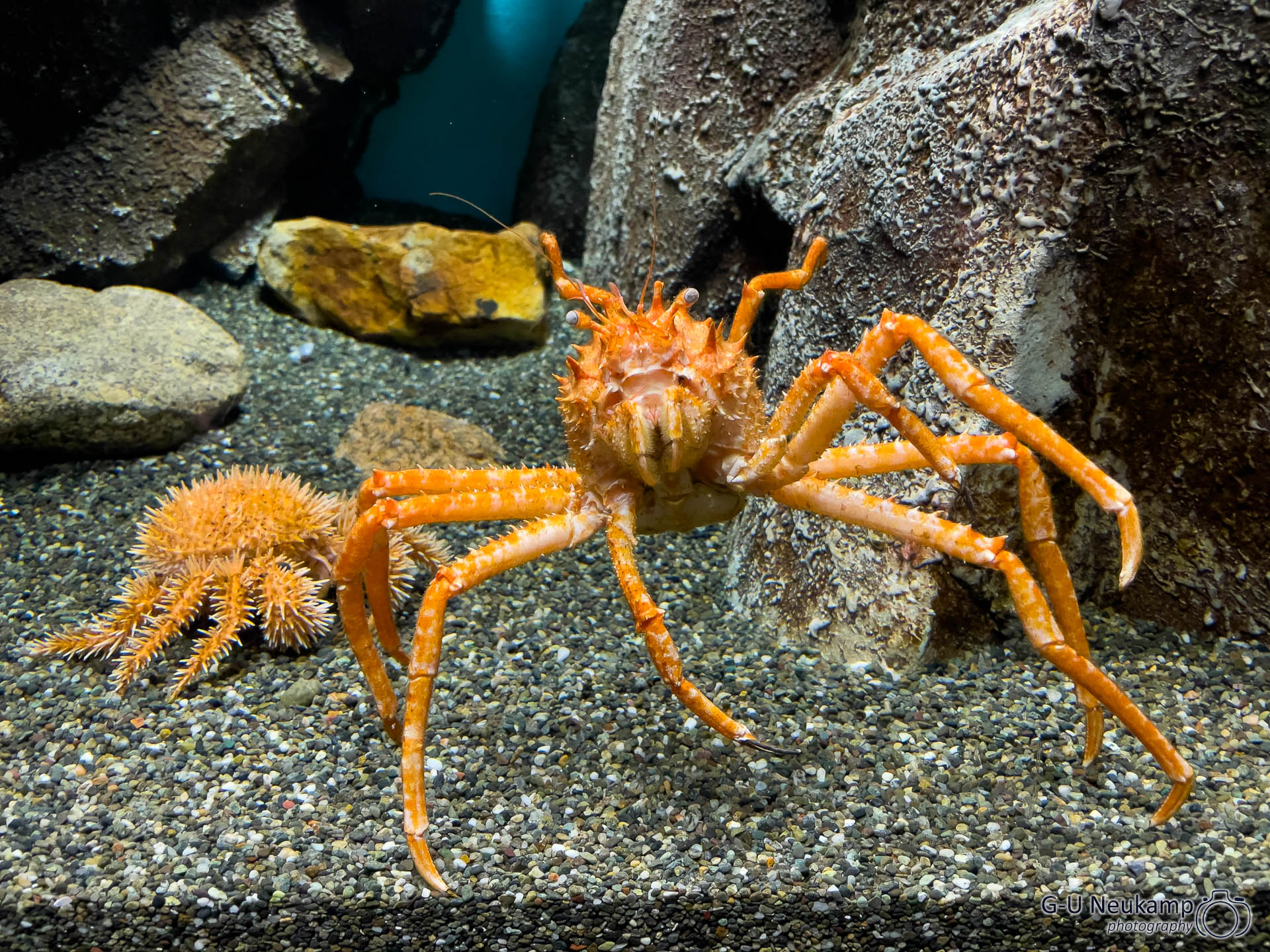
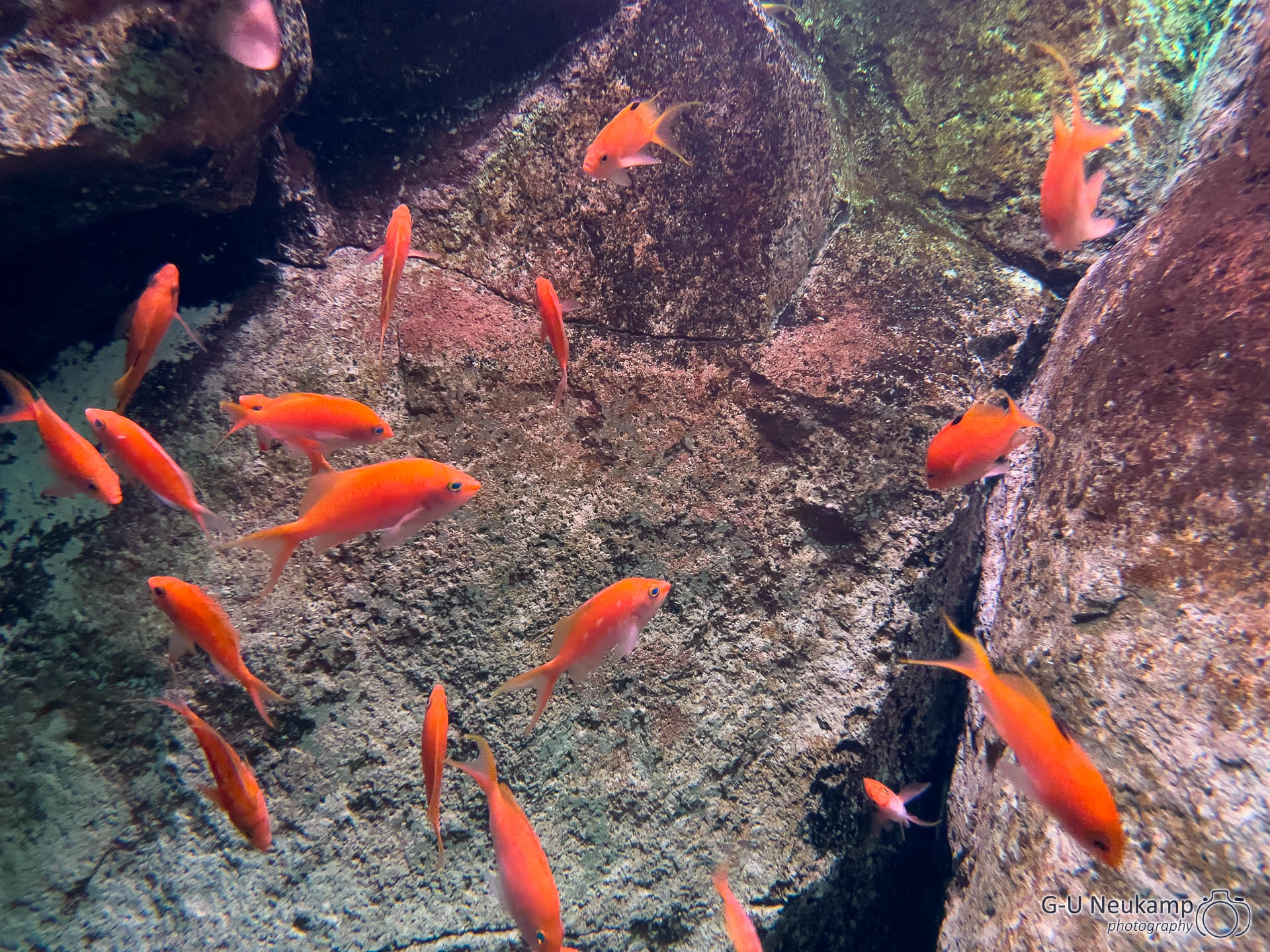
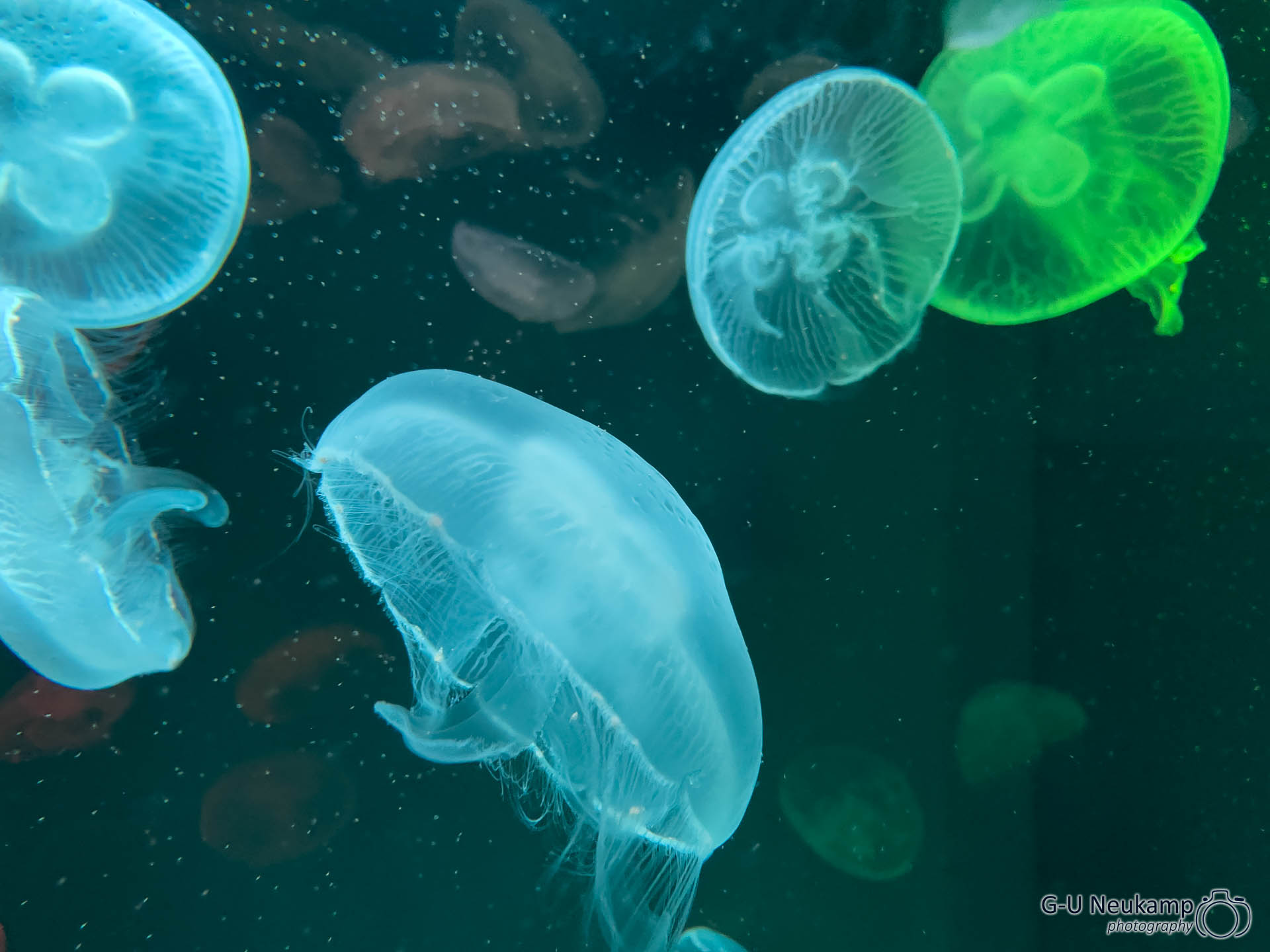
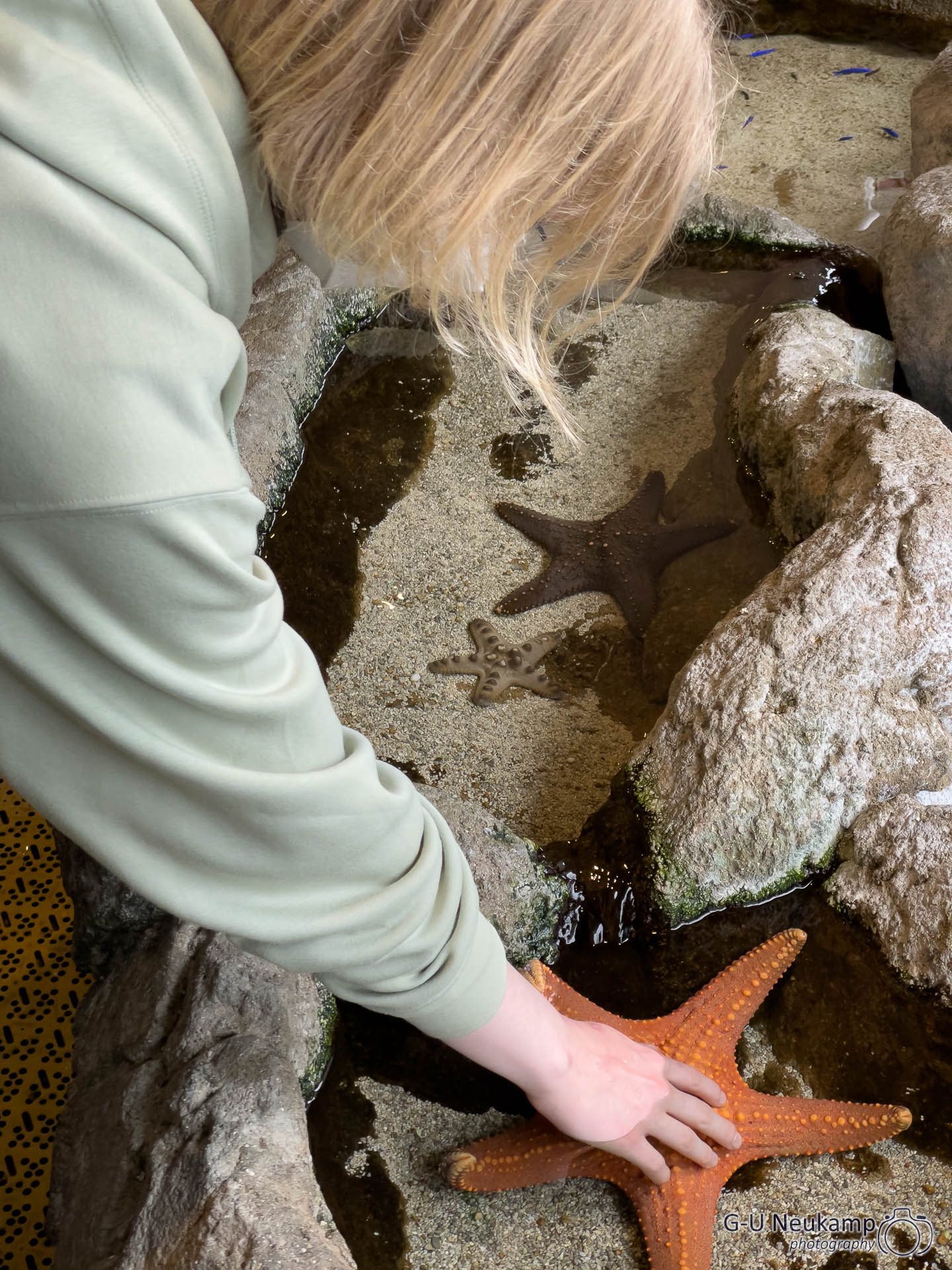
Unfortunately, the weather remained bad, it rained constantly. We walked around the island under umbrellas. On the way we found a traditional Japanese teahouse. There we were welcomed friendly, there was also “English Style”, speak table and chair. Sitting on the traditional Japanese low chairs is very difficult for us elderly Central Europeans. When the owner and her daughter, who ran the café, realized that Luise spoke Japanese, they were thrilled and clapped their hands loudly. We were bid farewell in the friendliest way: “Arigatou gozaimasu” - thank you very much.
Senjo-kaku
Another landmark of the island is Senjo-kaku hall. In 1587, Toyotomi Hideyoshi ordered this hall to be built so that Buddhist sutras could be chanted here every month to comfort the souls of the victims of war. When Hideyoshi died in 1598, the building was still unfinished, lacking walls and ceilings. The actual name of this hall is Toyokuni Shrine (Toyokuni-jinja, roughly “Shrine of the Lush Land”), so named in 1872 and dedicated to the soul of Hideyoshi; but it is commonly called Senjo-kaku, “Tower of a Thousand Tatamis,” an allusion to the size of the hall, which is built of massive wooden beams and pillars.
Next to the hall is the five-story pagoda, which stands out for its strong orange-red color. It also belongs to the Itsukushima Shrine. The special feature of this pagoda is the central column, which extends from the top only to the first floor. Only five pagodas of this type are said to exist in Japan.
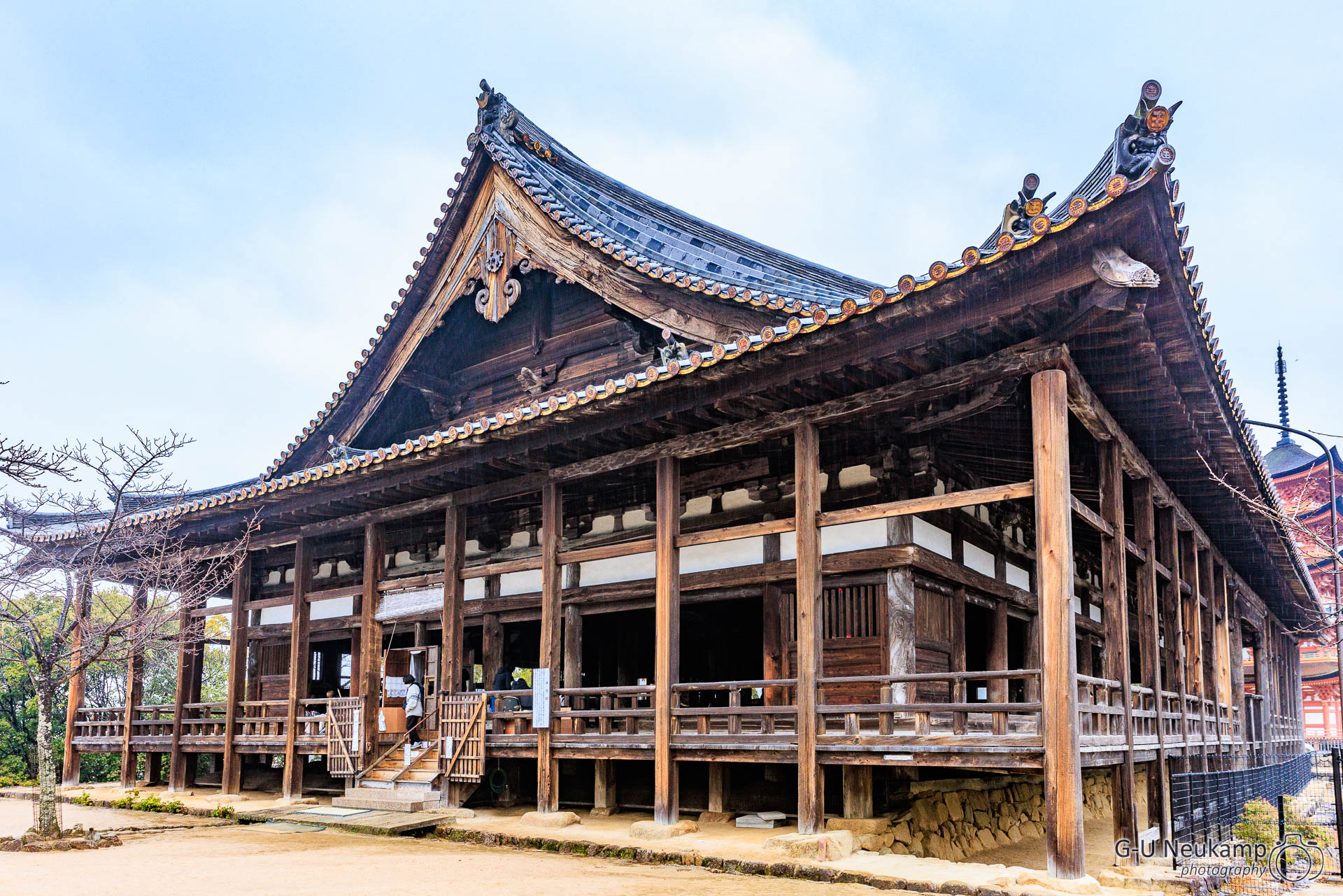
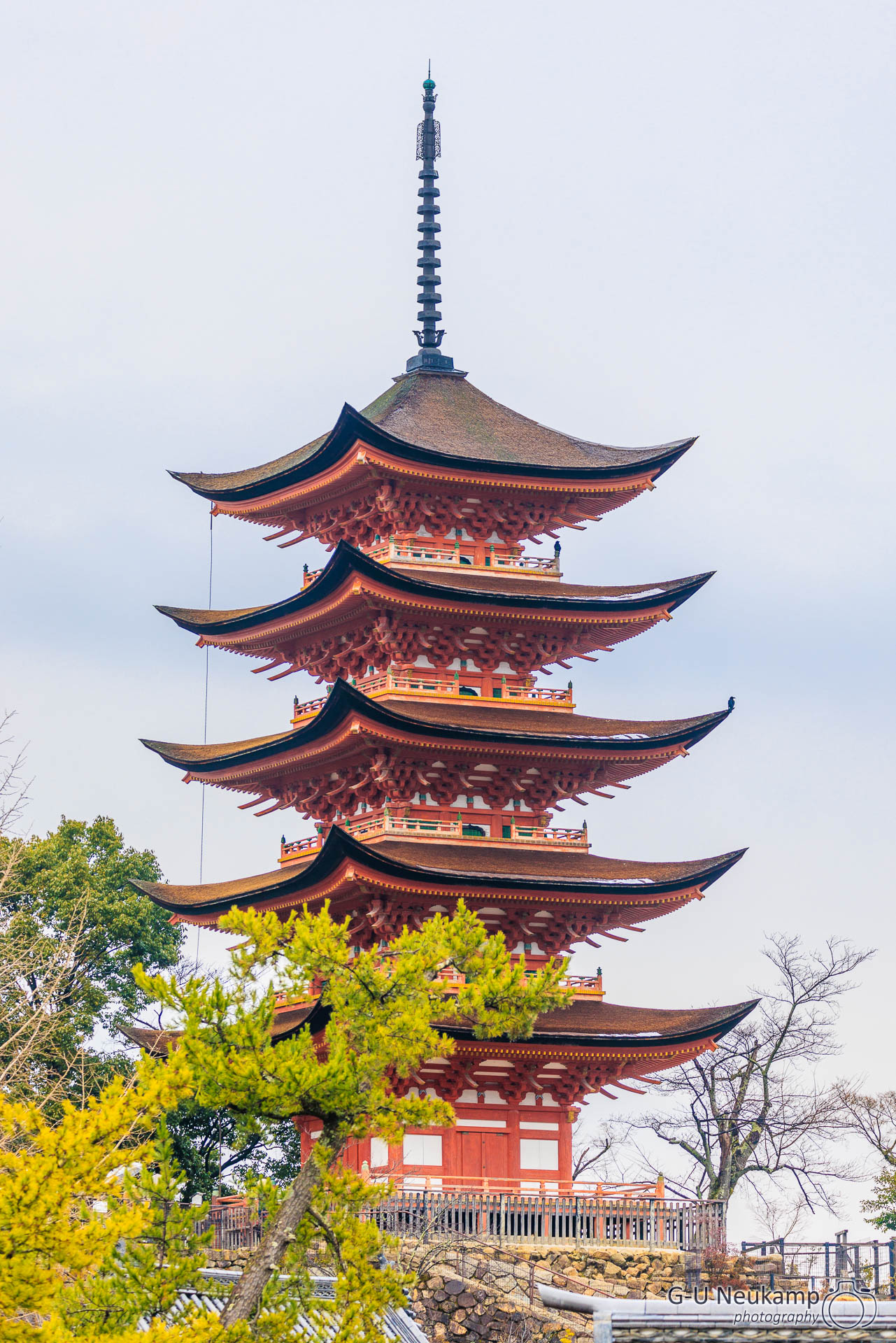
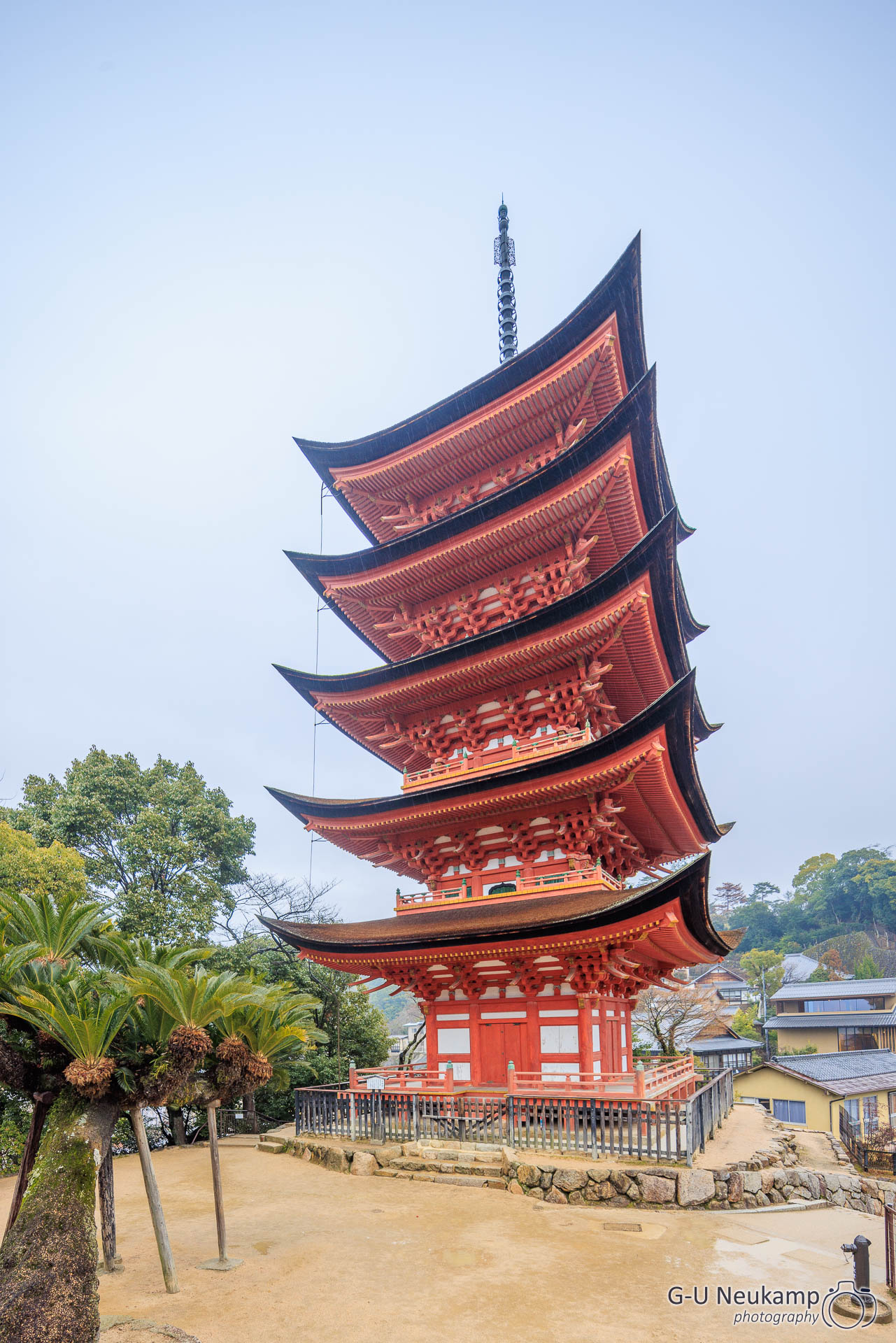
In the late afternoon we left Miyajima again and took the boat back to Hiroshima.
Finding a restaurant for dinner was not so easy. It was Saturday evening and the Japanese also have off on Sundays and go out. Everything was fully booked, a reservation no longer possible. But we were finally lucky. Thanks to our excellent guide, we quickly found an izakaya. There we tried a variety of different dishes. Black rockfish, raw shrimp (yessss!!), tuna, karaage, specialties from Hiroshima, sake and much more. They gave us a receipt with a QR code printed on it, which we could scan with our smartphones. This took us to a website where we could conveniently enter our order. After a short time, the order arrived.
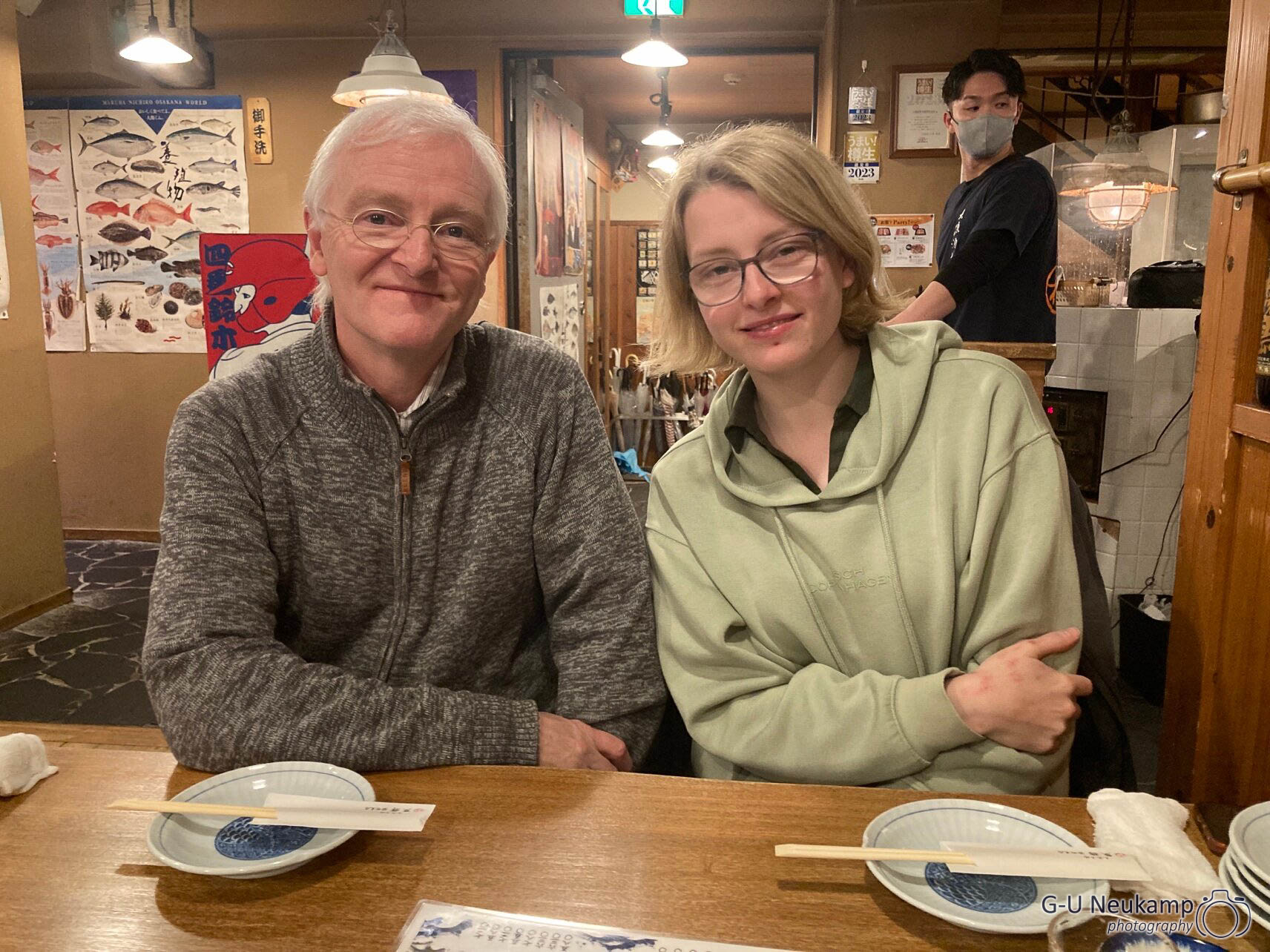
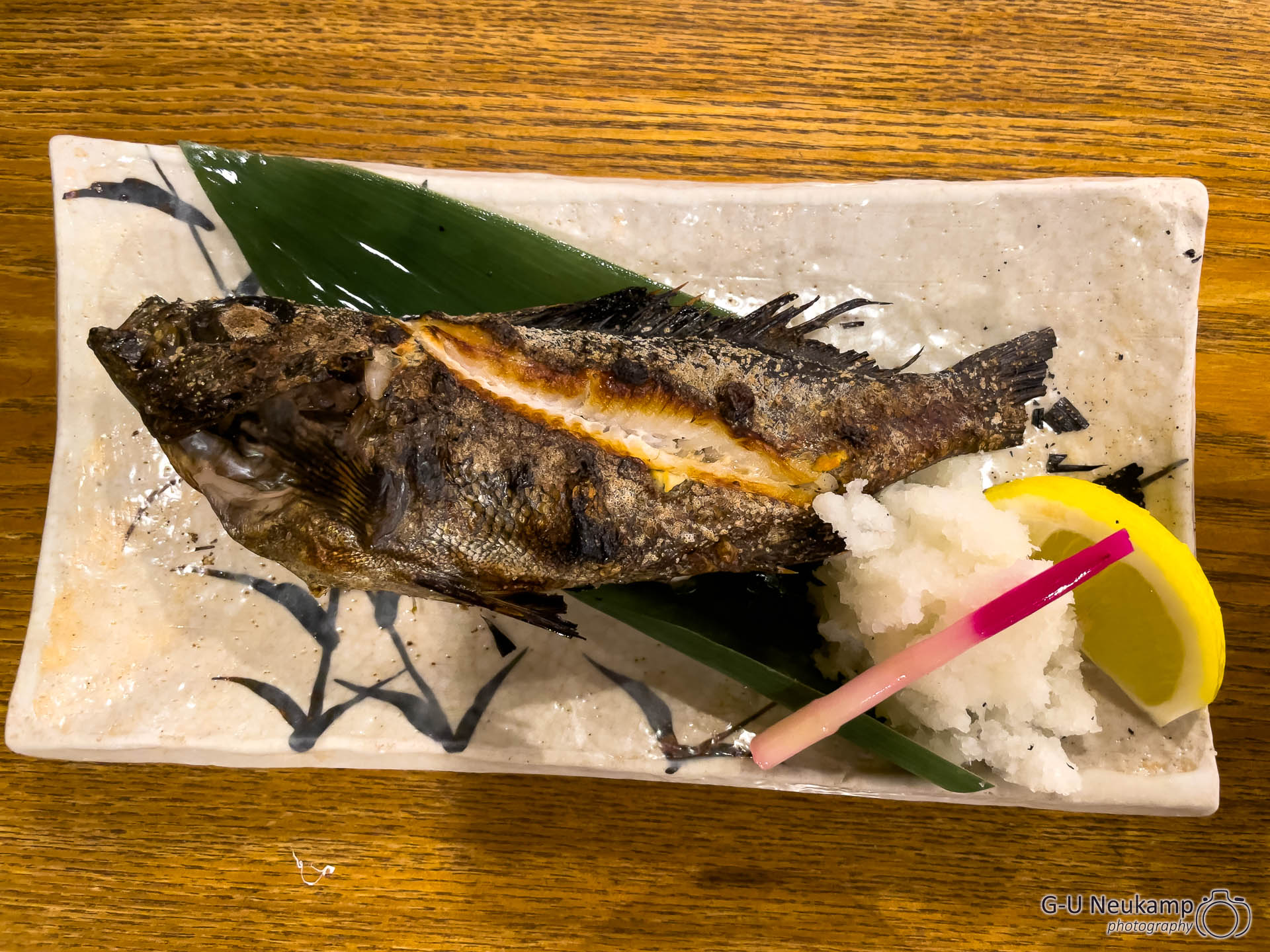
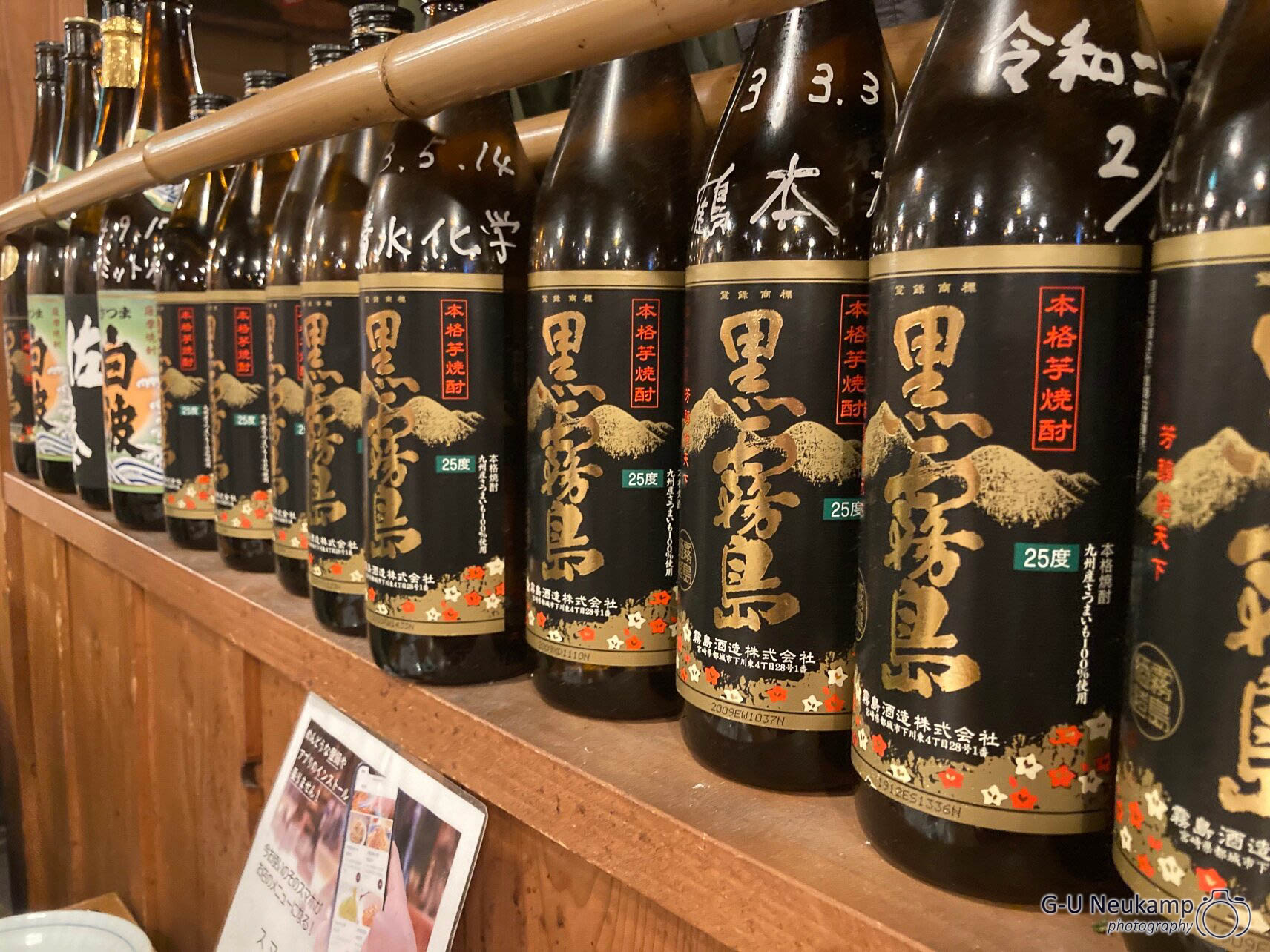
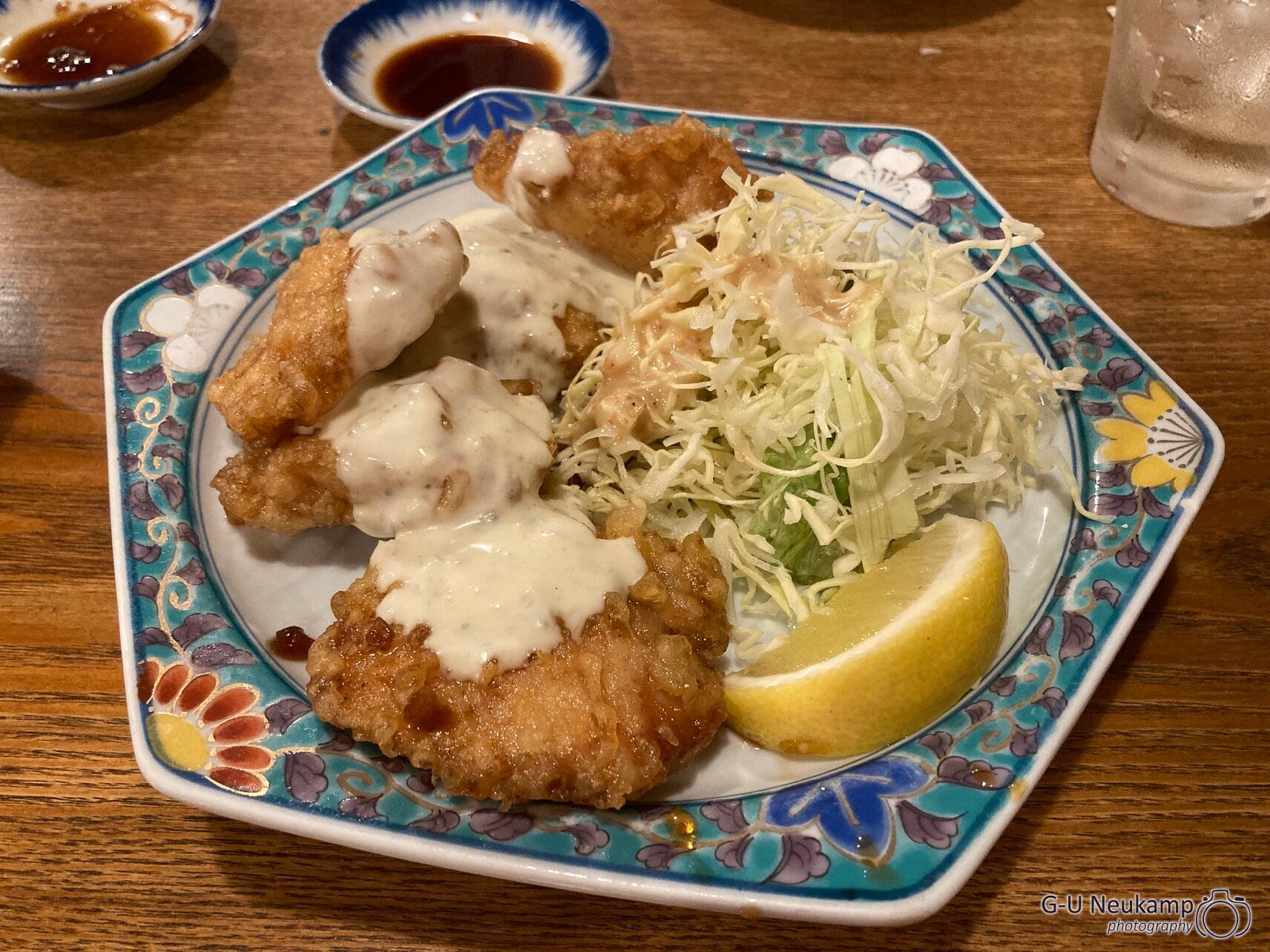
In a lively mood from the sake, plum wine and white wine, and well saturated, we went back to the hotel.
